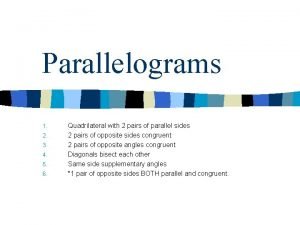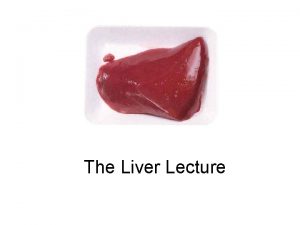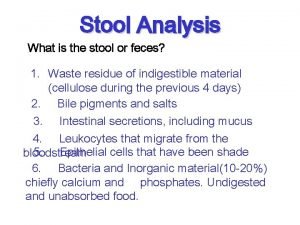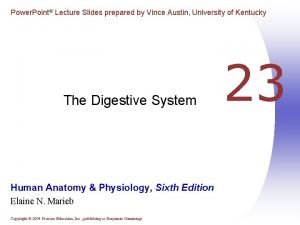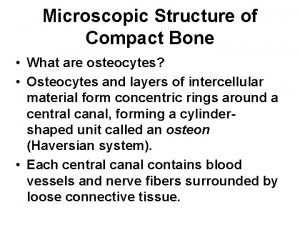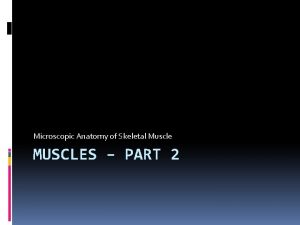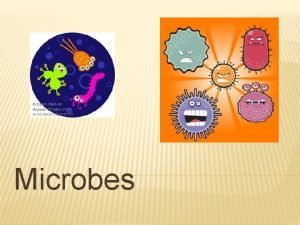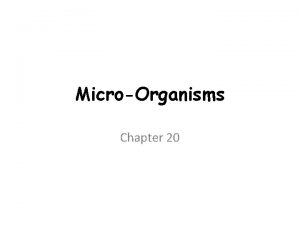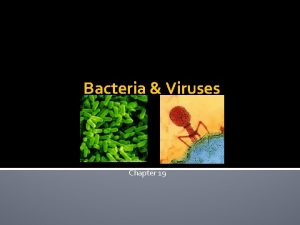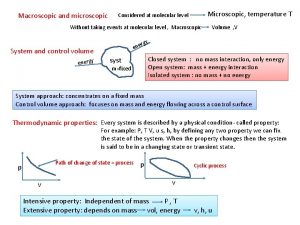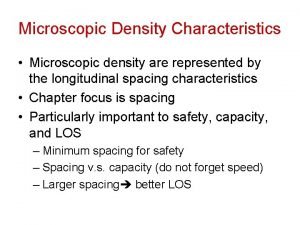Microorganisms Microorganisms Microscopic life covers nearly every square















- Slides: 15

Microorganisms

Microorganisms Microscopic life covers nearly every square centimeter of Earth. The smallest and most common microorganisms are called prokaryotes Prokaryotes do NOT have a nucleus

Prokaryotes Prokaryote A single-celled organism without a nucleus. No membrane-bound organelles. Smaller than most eukaryotic cells.

Classifying Prokaryotes Two Kingdoms - 1. Eubacteria 2. Archaebacteria Eubacteria The larger of the two kingdoms. Live almost anywhere (diverse environments) Have a circular chromosome. Surrounded by a cell wall which protects it from injury. Cell walls contain a carbohydrate known as peptidoglycan. Some bacteria have a second, outer membrane.

Classifying Prokaryotes Archaebacteria Look like eubacteria. Equally small, lack a nucleus, have a cell wall. But they are different Cell walls lack peptidoglycan. Membrane lipids are quite different DNA sequences are more similar to eukaryotes than eubacteria. Live in extremely harsh environments like: Oxygen-free environments (thick mud, animal digestive tracts. Extremely salty places (Great Salt Lake) Hot springs (temperatures approach boiling) Hydrothermal vents (hot, poisonous H 2 S) Extremely cold places - Antarctica

Archeabacteria in Extreme Environments Methanogens produce methane gas live in anoxic conditions No oxygen: muddy, bogs Peat bog Thick mud

Archeabacteria in Extreme Environments Thermophiles Thrive in extremely hot places. Hot Springs Have specially adapted enzymes that withstand excessive heat without denaturing. (remember the liver lab? ) Phile = lover of Thermo =heat Hydrothermal Vents

Archeabacteria in Extreme Environments Acidophiles Like extremely acidic environments Snottites from caves with high acidity

Archeabacteria in Extreme Environments Halophiles Like very salty environments Great Salt Lake

Diagram of Bacterium Make protein Used for sexual reproduction Used to help with movement

Identifying Prokaryotes By Shape By Cell Wall By Movement By Mode of Nutrition

3 Shapes of Bacteria bacilli Bacillus - Rod shaped Coccus - Round Spirillus - Spiral spirilli cocci

Cell Wall Type Gram - Staining 1. Gram-positive bacteria - stain purple-black. Walls contain peptidoglycans - protein + carbohydrates Eubacteria 2. Gram-negative bacteria - stain pink. Thinner walls, more membrane-like - lipopolysaccharides Archeabacteria Gram staining is useful in bacterial classification & identification, and in showing differences in cell wall structure.

Classification By Movement flagella - a whip-like structure Propels bacteria like an airplane propeller Lashing, snaking or spiraling forward Gliding on a slime-like layer

Classification by Mode of Nutrition Here comes the sun, doo dooo doo Autotrophs - make their own food 1. Photoautotrophs - use light in photosynthesis to make carbohydrates. 2. Chemoautotrophs use chemical energy Chemosynthesis from ammonia, at a hydrothermal hydrogen sulfide, vent nitrites, sulfur, or iron to make carbohydrates in chemosynthesis. Heterotrophs - consume organic molecules
 Every country and every nation
Every country and every nation Microsoft mission statement
Microsoft mission statement Every knee shall bow every tongue confess
Every knee shall bow every tongue confess Every rotarian every year
Every rotarian every year Every nation and every country
Every nation and every country Every picture has a story and every story has a moment
Every picture has a story and every story has a moment Every child every day
Every child every day Rectangle
Rectangle Microscopic anatomy of liver
Microscopic anatomy of liver Fecalysis result
Fecalysis result Art labeling activity figure 23.5
Art labeling activity figure 23.5 Microscopic structure of compact bone
Microscopic structure of compact bone Microscopic anatomy of skeletal muscles
Microscopic anatomy of skeletal muscles Microscopic organism definition
Microscopic organism definition Stool routine examination
Stool routine examination Impediment to responsibility
Impediment to responsibility







